WASHINGTON — The two organizations representing the private-car industry say they’re doing their part to communicate with Amtrak the importance of their industry.
A Wednesday afternoon memo from the American Association of Private Railroad Car Owners urged its members contact lawmakers and opinion leaders about the significance of private cars, just hours after Amtrak announced it would do away with special trains and charter moves.
“Amtrak’s stated rationale for these changes is that private varnish has the potential to worsen on-time performance, which is a major concern of President and CEO Richard Anderson,” AAPRCO President Robert Donnelley wrote in the memo, adding that the association’s annual convention and mid-year special trains are at risk.
Donnelley said the private varnish business adds approximately $10 million in gross revenues to Amtrak, despite a recent Wall Street Journal article citing only a $4 million impact. Amtrak generates revenues from private cars by charging operators to haul the cars either behind regularly scheduled trains or on their own special moves.
The memo also stated the association is “working to get the most accurate information about the full extent of Amtrak’s policy, which may not yet be firmly in place, and to mount the strongest possible effort to push back against it.”
Donnelley urged members to educate elected officials on the importance of private varnish and the number of jobs associated with the industry. The memo talked about the effect to employment at shops and other vendor facilities that provide support to private cars.
Similarly, the Railroad Passenger Car Alliance is working towards a solution and hopes to communicate its concerns to Amtrak on behalf of the industry.
“The policy as officially released on March 28, 2018, will have drastic effects on many private car owners, excursion operators, private companies, and tourism in many communities that utilize Amtrak’s service,” RPCA President W. Roger Fuehring tells Trains News Wire.
“As we move forward, we hope to have an open dialogue with Amtrak in regards to discussing this policy. We look forward to returning not only the revenue stream to Amtrak that we produce with our clientele, but the goodwill that we generate on behalf of Amtrak with every trip,” he adds.
The groups are responding to a Wednesday memo to Amtrak employees from Anderson, the former airline executive who became Amtrak CEO in January. It stated the passenger railroad would cease to operate special trains and charter moves in a concentrated effort to improve on-time performance.





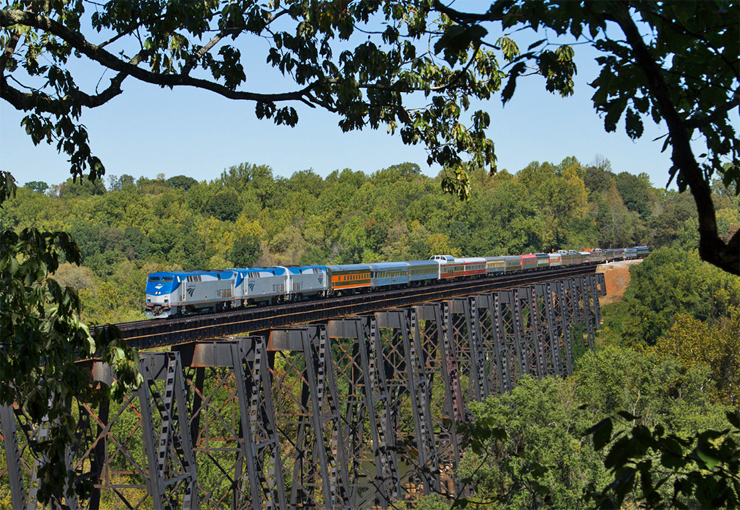

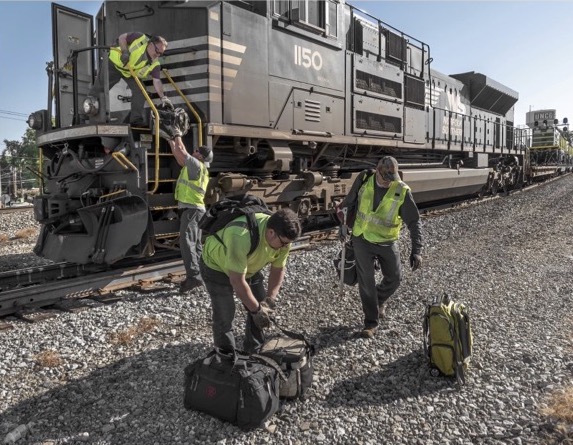
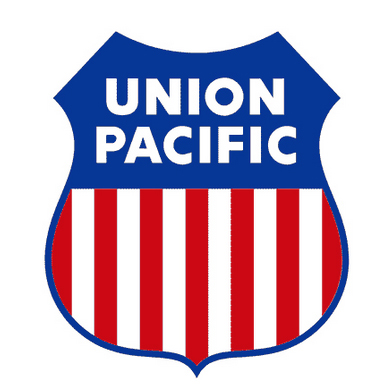
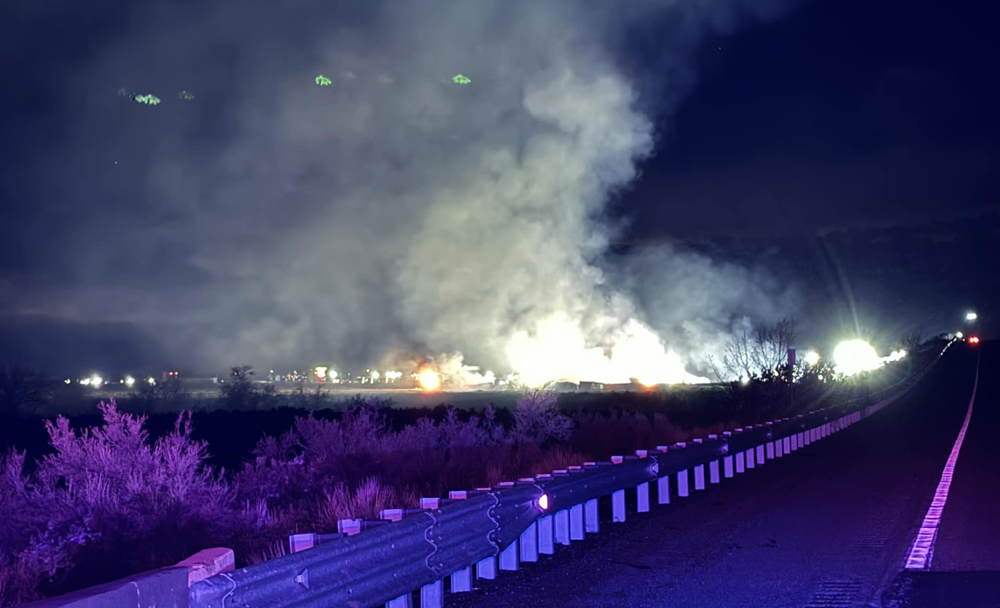
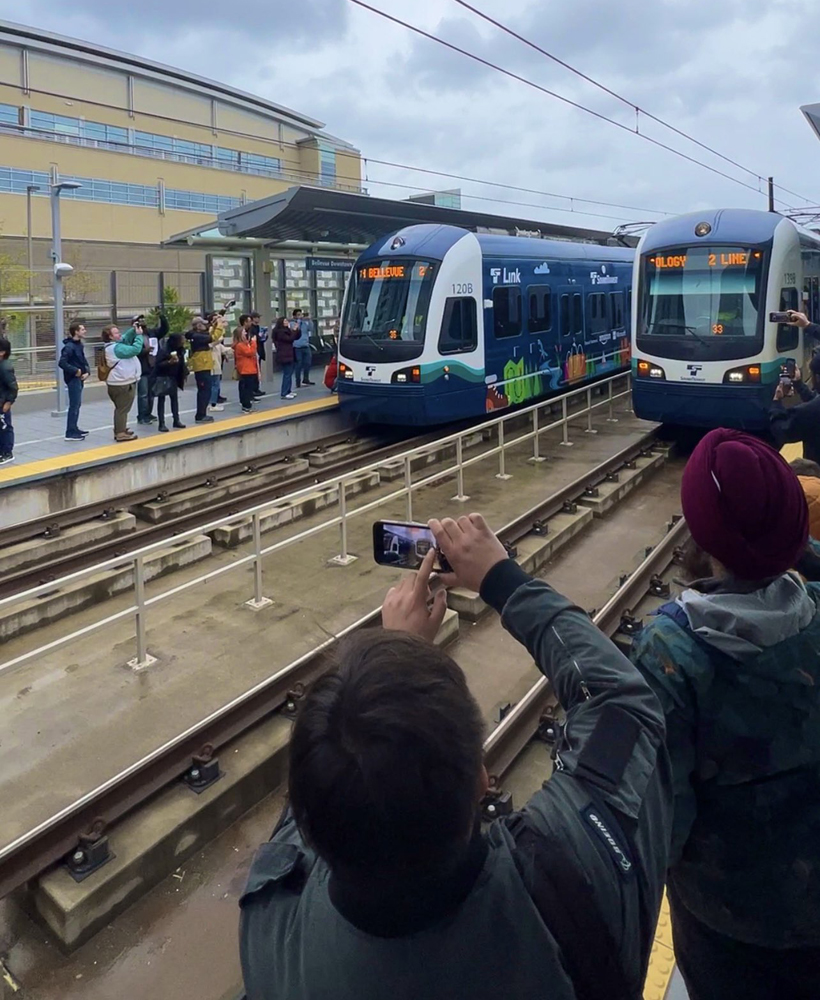




Anderson appears to be leading Amtrak toward a bare bones operation bereft of the uniqueness of train travel. I think Robert Armstrong may be correct. All signs are pointing in that direction. First Anderson canned the Pacific Parlour Cars, then he announced that Amtrak would cease to operate in non-PTC territories after the end of 2018, now he is rumored to favor reducing frequencies or routes in the long distance network. I foresee coach only trains with narrow three and three seating with minimum leg room and tile floors in Amtrak’s future (if there is a future). I remember my last trip on the Coast Daylight after SP downgraded the train by removing the carpeting and substituting vending machines for dining services. It was awful, but at least the seats didn’t resemble the interior of an airliner. I never rode it again. Will I be saying the same thing about Amtrak?
I wonder who picked Anderson to run Amtrak? He is worse than Tom Downs . I’m sorry but I don’t trust him. He comes from the airlines and I don’t see what good he can do. All the cuts that he has done to the riding public will hurt rather than help. I have a sickening feeling that this maybe the beginning of the end for Amtrak. I’ll be surprised and happy if Amtrak makes it to #50.
As a veteran railroader with 35 years in upper management experience, 10 of which was spend with Amtrak, I can tell you that events of recent weeks are utterly disappointing. If what we are seeing is Anderson’s vision of rail passenger business as it relates to the long distance trains, the service cannot and will not survive. Furthermore, if Amtrak becomes fragmented and not a national system, I cannot support it. What I think is going to happen is that a few state corridors will survive under the Amtrak flag and the long distance trains will wither away. It is a shame to be certain. Traveling by train is a unique way of seeing and experiencing many things. However, for it to compete in costs against its subsidized competition, additional routed rationalization and labor reform needs to take place. What bothers me the most is how arbitrary the decision making by Anderson has been. For example, rather than slash private car movements and/or decimate charter trains, why not at least put forth what a plan would look like to salvage the contribution those services do make to Amtrak’s bottom line. Right now Amtrak is not heading in a good direction I am afraid.
CEO Anderson’s actions to date seem to be directed at closing down Amtrak rather than trying to improve service. He apparently seems to think that he is still working for the airlines.
I wonder if Amtrak has this upside down. If the cost and distraction of handling this business are too great, then maybe they ought to streamline the process or contract out the work.
There is standard work content making these moves. Standardize the process!
Seems to me that the long term goal is to make amtrak as unapealing as possible.
Mr. Selden,
Were you employed by Amtrak? Or were you just another outsider reviewing public documentation but without any insight into the inner workings of the company?
I spent 42 years as a senior accounting and audit manager for a Fortune 250 Corporation. Outsiders had no real idea of the inner workings of our company, although many of them were sure that they knew more about our business than we did. In fact, even the regulators had at best a hazy picture of the inner workings of the company.
You wrote an article(s) regarding Amtrak’s accounting policies, procedures, and practices in the 1980s! You appear to be assuming that they have not changed. Moreover, Trains and Passenger Trains Journal are hardly peer reviewed professional accounting journals.
You have not convince me that you have the inside information regarding Amtrak’s current cost accounting system to draw a meaningful conclusion regarding the pricing of the special train movements.
Mr. Smith–I am retired from a 42-year career as a business lawyer. I have closely studied Amtrak’s business practices since 1979. I authored landmark examinations of Amtrak’s route accounting practices in Trains and in PTJ in the 1980s. Most of what I report about the APT system is drawn from documentation on APT that is available on line, in Amtrak’s published reports, from interviews with Amtrak’s (past) senior executives, and from congressional sources.
In this case, I will stand by my comment: any organization that makes business decisions at the margin based on “fully allocated” costing (based on a system that is not GAAP-compliant or audited) is doomed, too stupid to survive. Amtrak is a compelling case in point.
This is a much smaller point, but has anyone paused to ask whether Delta Airlines provides charter and special flight services to paying customers?
Good posting, Alex Christmas. You’ve identified the core issue. The scope of Amtrak’s resources are limited. Crews, locomotive power, liability insurance, and Amtrak’s right to run just about anywhere I would guess are the main Amtrak assets that are sought when running private cars. All cost money, and Amtrak should be adequately compensated – not only for the cost of using these assets but the cost of not having them available for normal Amtrak operations – notably, locomotives and cars.
Having said that, Anderson (Amtrak CEO) shoots from the hip a lot, and I’m not convinced he has thought this through (actually, I think he understands so little about it, that rather it is whoever told him to do this didn’t think it through). Evidently, he didn’t contact the affected parties to try to come up with an alternative, even if it was something like AAPRCO and others invested in these movements paying for a pool of Amtrak locomotives that can be used in these services.
The other part of this is that, having made this move – whether it actually fully comes to fruition or not – Anderson’s feet need to be held to the fire. He is now on record supporting using Amtrak assets COMPLETELY to ensure they are available to handle Amtrak passenger demand. So, this summer, instead of the usual fixed consists and sold out trains, I should expect additional cars such as Chicago-St. Paul coaches, and another sleeping car and a Cross-Country cafe on the Empire Builder. Yet, the rumor is that Anderson wants to reduce frequency on the Empire Builder and other long distance trains. At the very least, through our congresspeople, Mr. Anderson should be advise he can’t have it both ways.
Does anyone have the numbers on how many trains are delayed by private car moves? My uneducated guess is not very often, but I would appreciate being schooled.
For two years I tried to work with Amtrak for a Charter move from Pittsburgh to Altoona and return. It was painfully difficult and by the time the final numbers came in (3 months before the event) the cost per person (200 person trip) would have been in excess of $220/person. The largest cost wasn’t the move for the trip but the cost of all the equipment moves from NYC and Chicago to assemble the train set in Pittsburgh. The individuals I dealt with at Amtrak coudn’t have been nicer to work with but it was clear that Amtrak as a whole really didn’t want to be in the Charter business. I’m sure it was a pain and not profitable. We then looked at private cars on the regularly scheduled trains. That wasn’t too bad but we abandoned the whole thing and bought 200 tickets on a regular run which turned out to be 1/3 of the cost of the charter and accomplished the same things.
Private car moves are not the cause of Amtrak’s poor timekeeping. It is failure of the host railroads to prioritize movement of Amtrak as statutorily required and failure of Amtrak, the FRA, Transportation Department, the US Congress and Surface Transportation Board to demand, require and ensure enforcement through the courts. Additionally, where applicable and appropriate, there should be collaboration between the host railroads and government on funding and implementing infrastructure improvements that are designed to ensure adequate capacity for the coexistence of passenger and freight trains running safely and on time across the national rail network.
Like any rail fan, I’ve often dreamed of having my own private car and traveling the nation. And, while I think the removal of all excursions and charters is a bit short-sighted, I do have to respect Amtrak’s decision to operate only their core services. Mr. Anderson is an airplane plan, and it’s obvious that his long-term plan is to maximize equipment and resources and minimize cost, and occasional charters do not fit that model. What we really need is a national transportation plan that feeds bus to rail, and a rail system that runs in all kinds of weather. For Amtrak to succeed, frequencies must increase, on-time arrival must improve, and the country must change their opinion about rail travel.
It would have been nice if Anderson would haven gotten with private car groups and tried to work something out before making this decision. It’s hard to believe that private car moves have caused much delay if any on regular Amtrak service. If they had it seems we would have heard about it before now.
Sounds like Amtrak should just raise their rates and allow the market forces to take over. Raise them to what Amtrak needs to consider the service as worthwhile. Maybe at that point somebody else – maybe even the freight railroads – would step in to make these special moves if private varnish is willing to pay enough to get somebody to think their time was worth it.
Private Varnish owners should have the right to secure movement of their equipment, but it should never be done without due regard to other services required of Amtrak and the other railroads – and should be priced accordingly!
It would be interesting to learn of Mr. Selden’s qualifications to opine on Amtrak’s cost accounting system(s). Unless he has access to the company’s books, it is doubtful that he knows what he is talking about.
Consider this, the only cost for Amtrak when moving private varnish is either of the following…for an entire train of private cars they provide engines and crew, nothing more(don’t try and tell me they have to pay the railroad any more money to run another train, they already have that cost under contract). If it’s a private car added to the rear of an existing train they only have to provide switching services at origin/destination….you’re telling me that 10 mil doesn’t cover the fully allocated costs of those moves…someone has gotten into the happy powder to much if that’s the case. I’ll say it again, ANDERSON must go, bring in someone else, a railroader or even someone with just common sense….I could do better than he is, and I wouldn’t have a problem with Congress, they’d have a problem with me(you have to be like a bull in a china shop with them, only instead of walking on tiptoes you have to threaten to break everything in the china shop).
This is like the “third leg” examinations conducted by the U.S.Navy.
One can tack on a car or cars to an Amtrak train unlike on airplanes where you can’t do that. This is the difference presidents of airlines need to learn, I mean, they really have to come down to earth!
For a complete explanation of HOW Amtrak makes nothing but strategically stupid decisions, and has done so ever since Graham Claytor left the building, ponder this breathtakingly stupid statement from Richard Anderson’s memo announcing this decision:
” These operations…failed to capture fully allocated profitable margins… .”
NO business EVER makes decisions about any activity, at the margin, based on “fully allocated” anything. ALL decisions about any activity, at the margin, should be based SOLELY upon consideration of marginal revenues derived from the activity, collateral benefits drawn from the activity, and the MARGINAL costs required to generate the revenues of the activity. The ONLY costs that are considered are those that would not be (or have not been) incurred but for the marginal activity.
Amtrak has no internal system that calculates marginal costs.
This is why Amtrak loses two billion dollars a year, can’t improve its results, can’t grow, suffers a steadily declining market share in every market it serves (and nationally), and can’t figure out how to invest its free billion and a half subsidy every year in a manner that generates a positive return on capital.
Whoever wrote the memo for Mr. Anderson’s signature should be fired immediately, along with everyone who agrees with him.
Since I’m a ticket holder I just got word that the 261 trip in June will be canceled because of Amtrak’s new policy
Deja vu all over again! As aself-designated pure monopoly, ATK’s attitude has been “if it’s not our idea or we are not doing it, nobody else can.” ATK is content to watch its equipment sit idle in the yards, rather than increasing asset utilization by earning additional income from STs, CTs, and PVs moves.In the mid-1980s, I worked with a Washington law firm to litigate ATK over its misperceptions of being granted a monopoly:
-Anti-trust of “vertical tying” by requiring their own crew, products, and keeping all revenues if a cafe was to be included in consist. This despite evidencing dram shop and other insurances per state requirements.
-Despite printed ST tariff, ATK gave favored clients a special break–instead of paying a $500 deposit for every train operated, some clients just paid a one time rolling $500.
-Manipulating clients to include a dorm car for crew, which would have triggered need for second loco–at ST operator’s expense.
-To punish a customer by eliminating ability to use ARC and pay after trip. Instead, to request entire bill paid up front.
Remember ATK’s attitude in the mid-1980s that all HSR would fall under its mandate to operate passenger trains? Today, we have PRIIA which despite its language, prevents private operators on either new routes, or on ATK routes.
Frankly, these self-destructive acts choreographed by whomever is leading CEO Anderson are but a prelude to the real issue–cutting or reducing the long distance routes. Watch the silence from the Northeastern politicians who will have nothing to lose now that they have received their basket of $541 Million.
Private cars are not the problem….Amtrak is.
What will the rich boys with their life-sized toys do now? I guess they will have to buy their own railroad next. I hear CSX is selling pieces of theirs.
But this sucks. Why rig the economy with one printing press bubble after another so it can pay off handsomely for one generation only if that one generation with all the money has no willing Amtrak to haul their PVs with?
We the people have said:
Special Passenger Trains
Pub. L. 110–432, div. B, title II, §216, Oct. 16, 2008, 122 Stat. 4930, provided that: “Amtrak is encouraged to increase the operation of special trains funded by, or in partnership with, private sector operators through competitive contracting to minimize the need for Federal subsidies. Amtrak shall utilize the provisions of section 24308 of title 49, United States Code, when necessary to obtain access to facilities, train and engine crews, or services of a rail carrier or regional transportation authority that are required to operate such trains.”
http://uscode.house.gov/statviewer.htm?volume=122&page=4930
Notated in CFR 49, §24308. Use of facilities and providing services to Amtrak
http://uscode.house.gov/view.xhtml?req=granuleid%3AUSC-prelim-title49-subtitle5-partC&saved=%7CZ3JhbnVsZWlkOlVTQy1wcmVsaW0tdGl0bGU0OS1zZWN0aW9uMjQ3MTE%3D%7C%7C%7C0%7Cfalse%7Cprelim&edition=prelim